Essay inspired by a lecture I gave at an inspiration conference for teachers, invited by the Stedelijk, the Gogh Museum and the Rijksmuseum.
As a child I was brought up in the idillic countryside. In spite of all it’s beauty I was always longing for the city. At the age of 12, our school took us on a day trip to Amsterdam. We visited the Rijksmuseum and were allowed some leisure time before we had to be back in the bus. Rather ashamed I admit I remember the Rijksmuseum by it’s many brownish and rather boring paintings. Scooping through the smelly second hand clothing at the Waterlooplein on the other hand is a vivid and happy memory. The Great Masters didn’t speak to me. I didn’t know how to look at them, I found no entrance into their beauty.
A few years later I choose art as one of the subjects for my exams. And visited Amsterdam again. I wanted to be admitted into Art School and could look at the masterpieces from that ambition. And I saw it. How the sleeve of the man on The Jewish Bride painting is almost like real cloth, how her skin is suffering from the harsh Dutch climate. I looked as a aspiring artist and saw so much more! The door was wide open.
No matter the beauty or exquisite craftsmanship, you can only see and appreciate that after you found the entrance.
Music as an entrance
Recently I looked at the Jewish Bride with some adolescents.
- Brown
- Old
- What is happening really? What’s this old guy doing putting his hand on her boob?
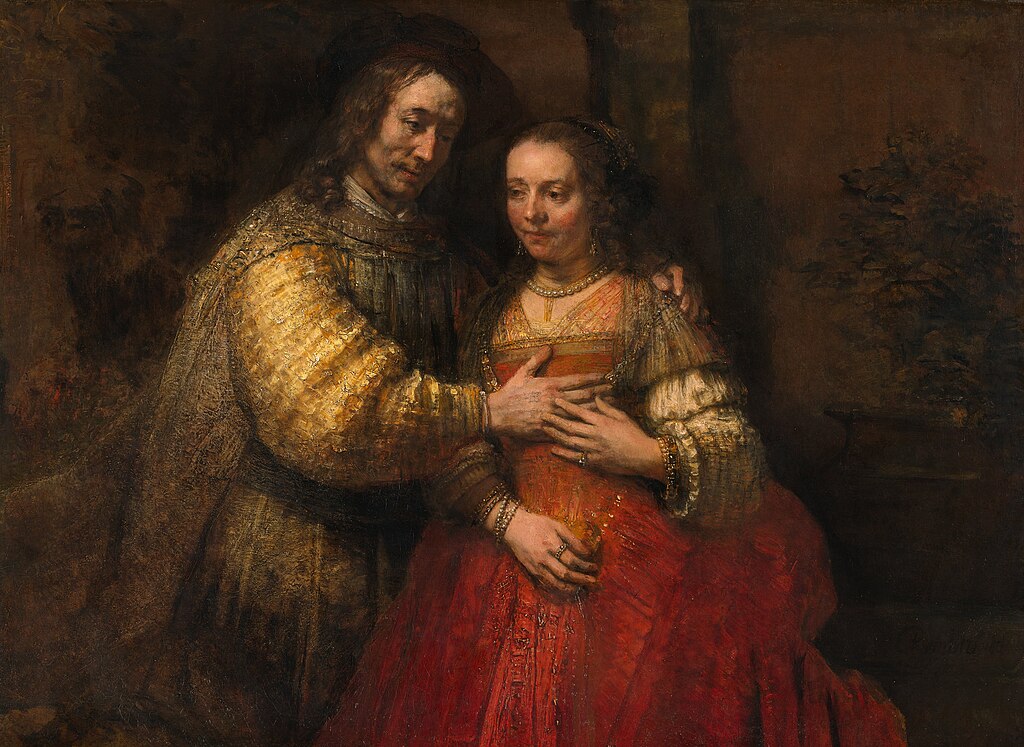
We searched for an entrance and thought of a song: Sorry by Justin Bieber. Play it and look at the painting:
Yeah, is it too late now to say sorry?
‘Cause I’m missing more than just your body
Oh, is it too late now to say sorry?
Yeah, I know that I let you down
Is it too late to say I’m sorry now?
And suddenly there’s a story! Entrance: check.
Oh no, not the Great Masters!
Being able and allowed to find a song like that is not as easy as it sounds. When I got the invitation for this lecture. (Proposed title was ‘Messing around with the Great Masters’.) I was of course deeply honoured, but terrified at the same time. Because to be critical about the Great Masters, that’s like challenging climate change. You just don’t do that. So -there I went- I plummeted straight into the valley of despair as modelled by Dunning and Kruger.
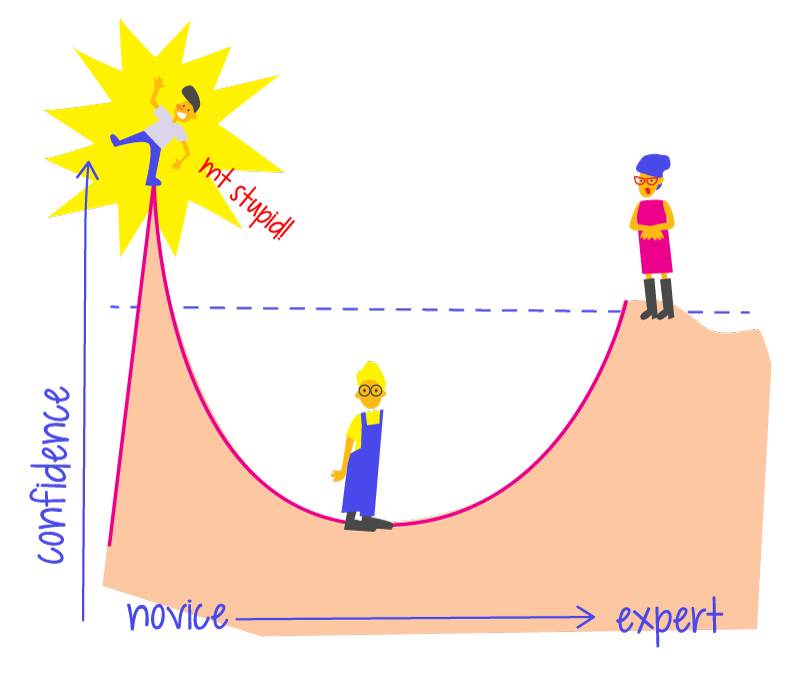
I was afraid. I was sure I could’t and -most of all- shouldn’t.
Funny really, because my 13 year-old self did not hold back at all. (Where is the Waterlooplein?!) On top of Mount Stupid it felt completely legit to raise my eyebrows at the education-professional hired by the museum. Her explanation did not help. She made us tired, and -probably even more so- we made her tired.
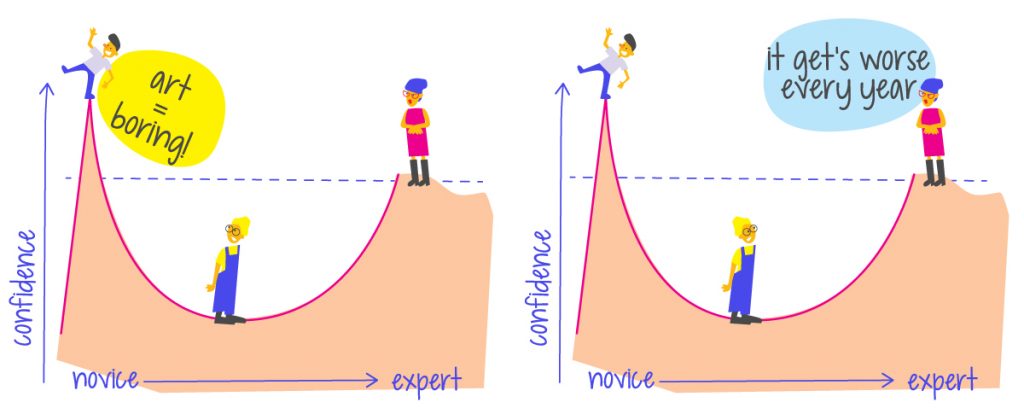
While we were firmly sitting on Mount Stupid, she suffered from the Curse Of Knowledge. As an expert, she forget that the stories she told over and over again to various museum visitors were completely new to us. Unconsciously she assumed we were up to her level. She simple could no longer image we were not inspired by the art she showed us.
Temporary perfection
I am a huge fan of Dutch historian Johan Huizinga. In 1938 he wrote his masterpiece on play: homo ludens. In his book, this is what he says:

Temporary limited perfection vs the intended goal.
Huizinga states that play is not ‘just a game’ but is very important to us people. It allows us to take a break from reality, to create a new order. We should take play very serious. Many artist show a playful attitude in their work. They use play for development. (Art-experts should maybe play a bit more!)
As a society we see a contradiction between the attitude of the novice and the established expertise. A conflict even. I feel that often when I exchange ideas with my kids while visiting a museum. My education sometimes get’s in the way of having an open mind, while my knowledge helps appreciate the works we are visiting. And my kids give me a new perspective!
If we look for an entrance into art, this could be something: experience/knowledge, exchange and an open mind to new ideas.
A story on knives
Sometime ago some kids and I were working on our Klooikoffer (Tinkering kit) about sharp knives. I bought floral foam, a lot of knives and truckloads of candy. I inspired the kids with the concept of the statue already being in the foam. Very pleased with myself I cut a polar bear in under 10 seconds. See! Easy!
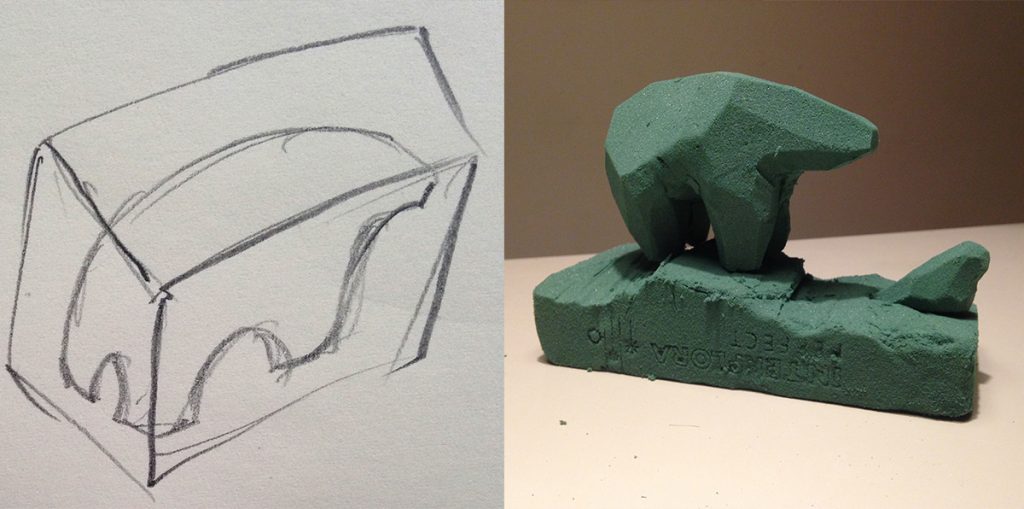
The kids tried hard and were doing ok. Their sculptures were not very refined (ahem) but I could see progress. But one boy didn’t get anywhere. He just cut. And cut, and cut some more. Ignoring my meaningful looks and positive stimulation he just carried on. Oblivious to my the Intended Goal.
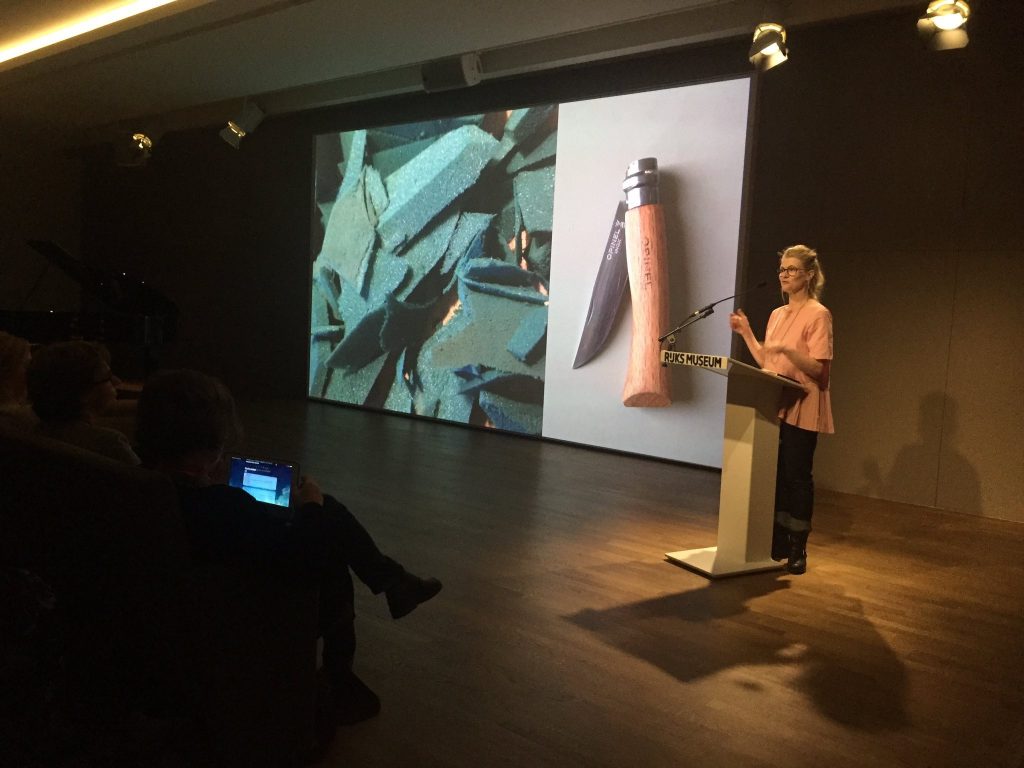
And then I got it. He was in a state of flow. Temporary limited perfection. He was cutting because he wanted to do just that. Feeling the knife going through, making nice little slices, mastering his tool. As a fearless beginner.
Beginner’s mind
The beginner’s mind: ‘Having an attitude of openness, eagerness, and lack of preconceptions when studying a subject, even when studying at an advanced level, just as a beginner would.’
We love the beginner’s mind: when looking for it in Google I got 39.100.000 results. We are looking for it, and probably longing for it too.
Stringing beads
The beginner’s mind has to do with an open mind: being able to see something for the first time. But is that the same as being on Mount Stupid?
This is an owl, copied from a book on Jeroen Bosch. It is an owl, but doesn’t exactly follow the owl rules. Mount Stupid!
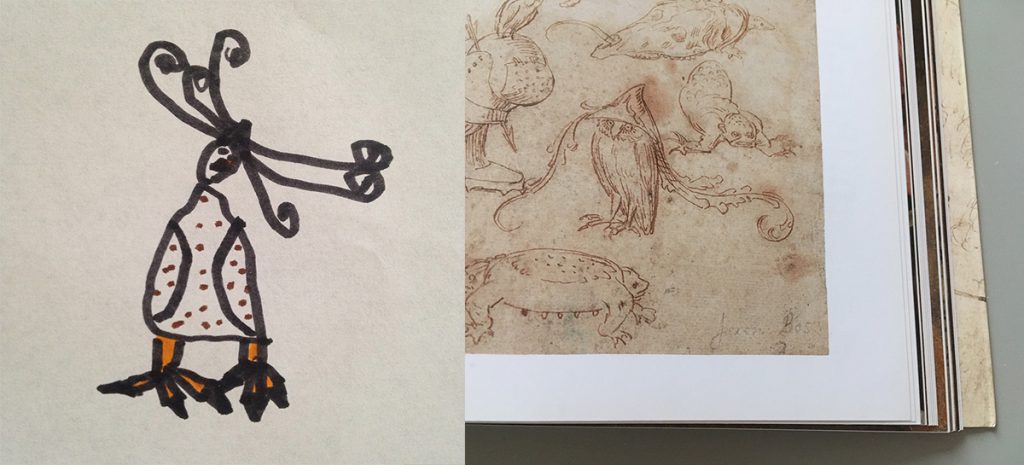
But look again, there might be more to the owl. The big festive hat, the giant feet… This artist did not do a proper copy but drew what he saw. Mount Stupid, probably. But in a good way! Mount Beginner?
Mark Mieras (brain researcher and writer) describes the memory as stringing beads. We all have strings with connected ideas in our head. When we encounter something completely new (a new bead), we connect to our existing knowledge (strings of beads). It can stay. Is there no suitable string, the experience does not become an important memory. The bead rolls away.
When you don’t have an art string (yet), there is no room for art. It rolls away. But art is more than masterpieces, or in a museum where people tell you what is valuable and nice. This young artist did not see the art by Jeroen Bosch, he saw a glorious monster! With supercool feet. Jeroen Bosch’s drawing got on the scary monsters-string.

From Mount Stupid he moved strait to expert. Without suffering the the agony the valley of despair has to offer. A pure beginner’s mind.
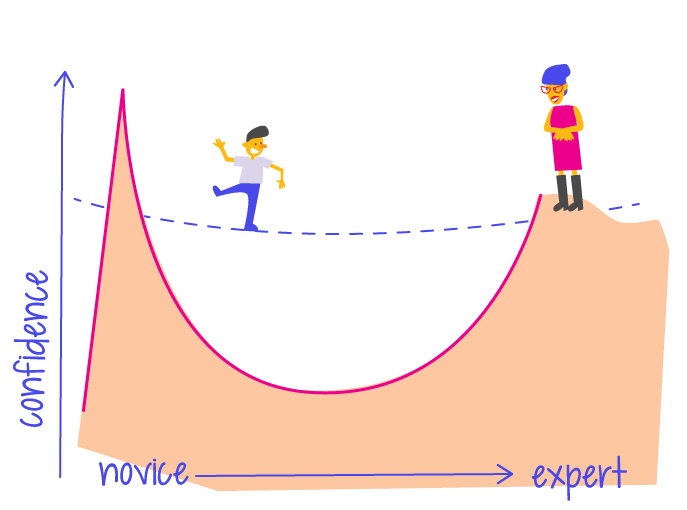
Is that ok?
But should we treat art like that? Can we connect Bieber to Rembrandt? Can we emphasise the monster quality of Jeroen Bosch’ work?
Pierre Cuypers (architect of the Rijksmuseum) probably didn’t think so. His building was designed to make us feel humble towards the art. Only after a well designed walk in which you leave your everyday life behind you can enter the high mass of art: the Gallery of Honour with the Nightwatch at the very center of the stage. Very deliberate. Telling us art and life are not the same.
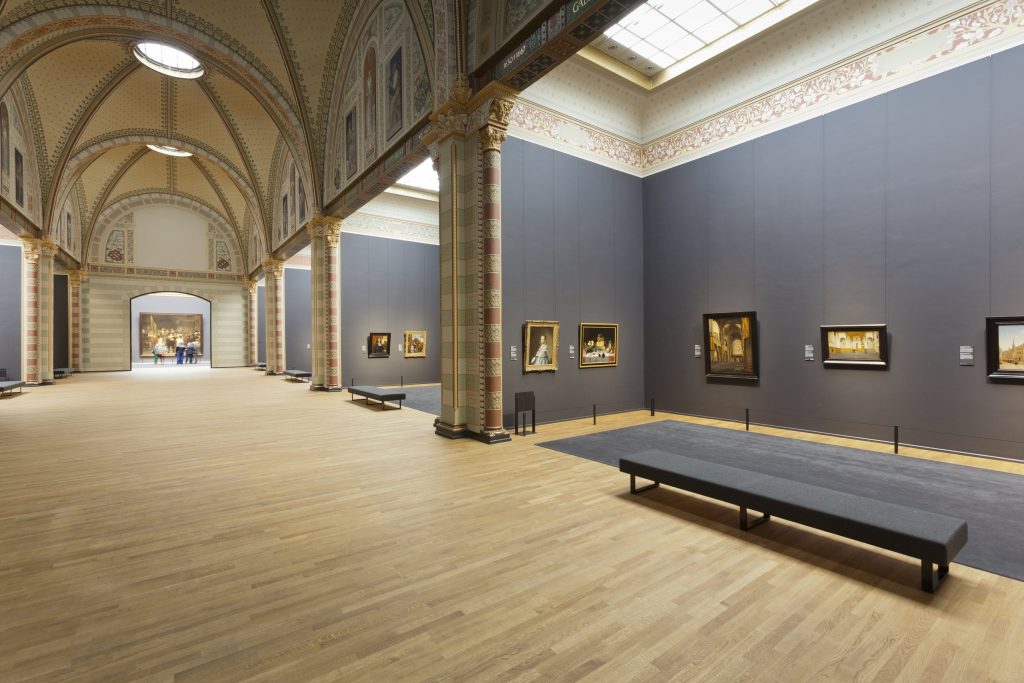
The Great Masters
To us the great masters are truly Great Masters. On display in the best musea in the world, with many many people visiting. (Cue up!) But in their days they were mainly (just) artists. Looking for answers. From a beginner’s mind.
Fixing reality
To create order was the big objective of Mondriaan and the Stijl. To find harmony and bring people the piece they so long for. With the artist as translator beween the high complex truth and the common people. Finding the right way to do so was no doubt a journey that required an open mind.
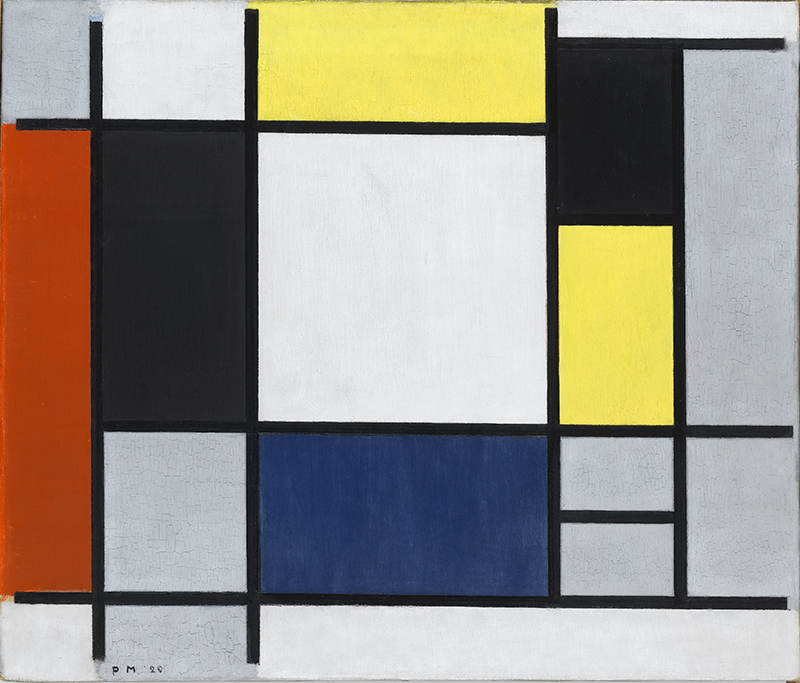
‘We must change nature’s appearance, to be able te see nature as it really is.’
Forever searching
Van Gogh searched. He was for ever looking for and finding the right technique, the right colours, the right subjects. Searching for reality. In his own, free style. The beginner’s mind as an attitude in life. (Read his letters!)
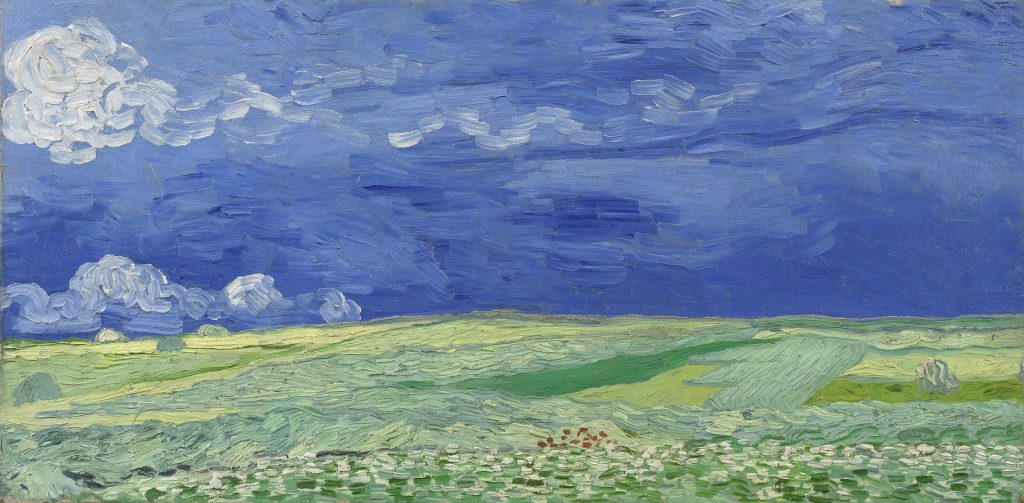
‘I am an artist. Thus I will look, but I will never find. I search and I chase with all I have.’
Craftsman
And Rembrandt? He considered himself a craftsman. A highly skilled self-confident businessman. Serious probably. But when you look closely at the delicate fabric that touches the neck of the Jewish Bride, you can recognise the search. How to add paint so it becomes translucent silk? Soft on her skin? Happy curiosity.
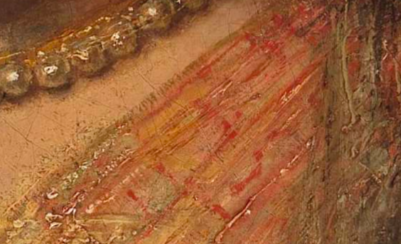
Absolute beginners
So, Great Masters? Oh yes, they are. Because we call them that.
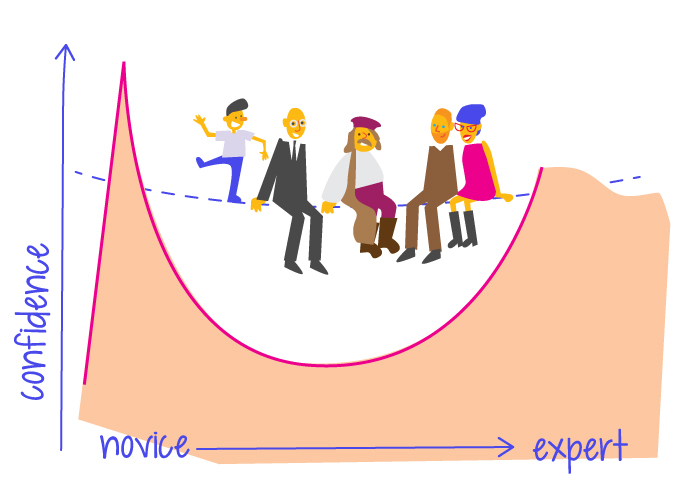
But in their days they were artists on a quest. Balancing between Mount Stupid and the expert spot. Just like the young artist that looked at Jeroen Bosch for the very first time. I think Johan Huizinga would be proud. He would consider the search to be an expression of play: a longing for temporary limited perfection.
Now us
The Great Masters label might feel like a closed door to some. So let’s be careful with celebrating genius, and also show doubt and development. Let’s allow beginner’s minds to challenge what we think and believe, while appreciating experience and knowledge.
Because we can only see through an open door. And keys come in many (sometimes unexpected) ways. It it too late now to say sorry?
